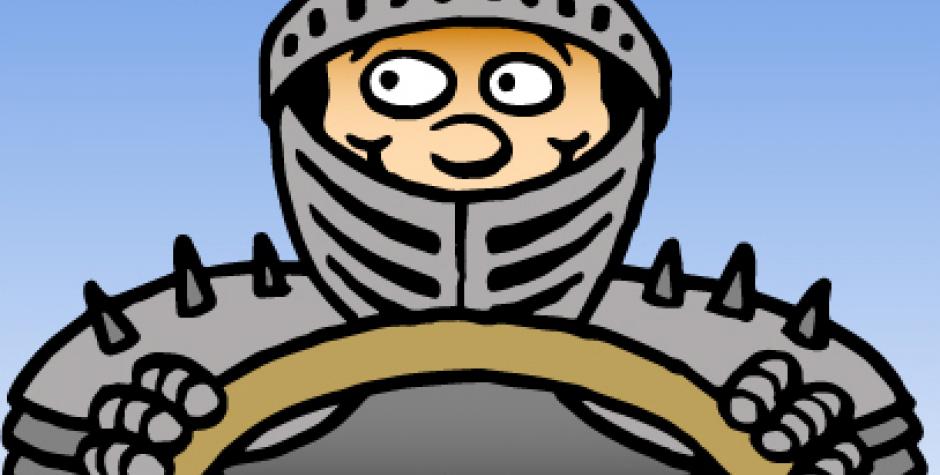IPDE defensive driving saves young lives

What is IPDE and why does Drive Smart teach it to all our students? IPDE is the step-by-step process of defensive driving and complexities of visual perception in traffic. In layman’s terms, it simply means that when new and inexperienced drivers play defense, their chance of not becoming another tragic statistic rises dramatically.
Driving is such a regular part of people’s lives that they’re often figuratively asleep at the wheel. A daily commute ecomes so routine that even experienced drivers forget that most automobile accidents happen within five miles from home. Think about it. People are sleepy and off to another day at the office. They’ve done this boring drive hundreds or even thousands of times. Chances are they’re not constantly scanning the horizon and anticipating potential driving dangers. While this is not a good situation for experienced adult drivers, it could have terrible consequence for inexperienced teen drivers.
That’s why Drive Smart Georgia teaches IPDE defensive driving to each and every one of our students, regardless of their age.
What exactly is IPDE?
Below is a more detailed description of IPDE (identify, predict, decide, and execute).
Identify (IPDE)
The first step of IPDE is IDENTIFY. The short explanation is to scan and locate potential hazards.
According to SafeMotorist.com, the foundation of the IPDE method of driving is reliant upon a driver’s implementation of scanning techniques that serve to discriminate between information that is useful to driving and ‘non-driving’ visual information.
To aid in this process, a driver must practice scanning the landscape for the primary purpose of IDENTIFYING real and potential hazards, like an oncoming vehicle in your lane of travel or a child playing near the roadway.
A driver must always be alert and aware to identify these unexpected and dangerous hazards.
Predict (IPDE)
The second step in the IPDE method is to PREDICT what might happen should you encounter a real or potential hazard.
For real hazards, such as an oncoming vehicle that drifts into your lane of travel, simply predict whether the oncoming vehicle will continue toward a driver’s car and, if so, what consequences the oncoming car’s path of travel might involve. As with any dynamic environment, the prediction process might require a re-assessment if another real hazard is identified between your car and the oncoming vehicle – such as a child runs into the street chasing a ball directly in front of your vehicle.
In other words, it’s important to PREDICT if the danger is real, perceived, or not a danger at all.
Decide (IPDE)
The third step in the IPDE method is to decide what action to take to avoid a real danger.
To avoid danger, a driver must quickly decide to accelerate, steer, decelerate (or any combination of these vehicle control maneuvers) to avoid a crash.
This process requires an understanding of the need for necessary time and space to implement the “decided-upon” vehicle control maneuver. Before implementing an avoidance maneuver, drivers must be certain that a chosen escape path is still available and access space is available (leaving the roadway) when choosing a “less desirable” emergency avoidance maneuver.
Execute (IPDE)
The fourth and final step in IPDE is EXECUTE. After identifying a hazard, predicting how it will impact the situation, and deciding on what action to take, it’s time to execute an action to avoid danger. Because execution can happen in a split second, it’s important to always be aware and alert while behind the wheel.
The execution process might range from gently moving toward the left portion of the lane when approaching a vehicle parked on the side of the roadway for repairs (a driver changing a flat tire) to implementing an emergency avoidance maneuver. Generally, a driver’s skill in implementing avoidance maneuvers will increase dramatically with driving experience.
IPDE in review
Drive Smart Georgia will continue to teach and emphasize the IPDE technique to all our students. We review emergency situations and potential hazards in our classrooms. However, IPDE must be practiced on the road in real life situations. That’s why all of our cars feature an extra brake and accelerator on the instructor’s side.
Quite often, teen drivers are simply too inexperienced to execute IPDE quick enough to avoid a crash.
If your teen needs more driving time with one of our instructors, click here. It’s always better to be safe than sorry.
CLICK HERE to subscribe to our free newsletter for teen driving tips and sales alerts.
Related articles:
- How to know when teens are ready to drive solo
- How to save on auto insurance for teen drivers
- Advice for parents of teen drivers




